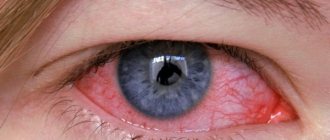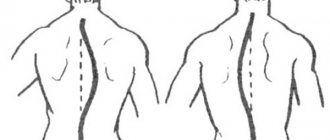Causes
Conjunctivitis is caused by various bacteria and viruses, so a common cold may well be a prerequisite for the development of the disease. A variety of ENT infections, allergic reactions, lack of hygiene, vitamin deficiency, hypothermia, contact lenses - all this and much more, even dust and wind, contribute to the appearance of conjunctivitis. Only a qualified doctor can correctly determine the cause, who must prescribe treatment depending on the type, nature and other circumstances of the ailment.
What is conjunctivitis, its types and causes of development
Conjunctivitis is a whole group of diseases associated with inflammation of the mucous membrane of the eye.
There are 4 types of conjunctivitis:
- viral,
- bacterial,
- allergic,
- autoimmune.
In addition, depending on the condition and nature of the course, conjunctivitis can be:
- sharp,
- purulent,
- chronic.
The causes of inflammation of the eye mucosa can be:
- infection with a virus or colds of viral origin,
- bacteriological infection,
- ENT diseases,
- reaction (irritation) to an allergen (for example, a component of cosmetics),
- incorrect selection of contact lenses,
- failure to comply with hygiene rules (for example, using someone else’s glasses, handkerchief, towel),
- avitaminosis,
- hypothermia,
- external irritants (such as wind, dust, smoke, etc.).
Due to the weakening of the immune system in pregnant women, conjunctivitis occurs quite often and often occurs with complications. The healing process is also slowed down by the fact that generally accepted (standard) medications recommended for the treatment of this disease are contraindicated for pregnant women. Bacterial and allergic conjunctivitis are eliminated quite quickly, but the viral form of the disease may require serious treatment.
An ophthalmologist is involved in diagnosing the disease, establishing the cause and determining the method of treatment. After a thorough analysis of the patient's blood and eye secretions, he prescribes adequate treatment. At the same time, expectant mothers need to remember that self-treatment - taking any medications (including hormonal and antihistamines) - is strictly prohibited!
Is conjunctivitis dangerous during pregnancy?
Expectant mothers are concerned about the question of how dangerous conjunctivitis is during pregnancy.
Experts say that in general this disease does not harm the fetus. However, the drugs that are used to treat it, when absorbed, enter the bloodstream, and with it to the baby and, thus, have a negative effect on the intrauterine development of the child. In addition, infection of the baby is possible during childbirth, and infectious diseases of the eyes of newborns are extremely dangerous and difficult to treat.
The most dangerous conjunctivitis during pregnancy is chlamydial, so it is important to promptly identify the disease and begin treatment immediately.
Symptoms of conjunctivitis
It is not difficult to identify conjunctivitis. First of all, sharp redness of the eyes and their irritation should alert you. The eyelid swells, increased tearing appears, and patients often complain of a feeling of a foreign body or sand in the eyes, which constantly irritates. As a rule, when conjunctivitis begins, it is problematic to look at the light and blink, and after blinking, severe pain and pain occurs in the eye. The last straw should be discharge from the eye of any nature - be it mucus or pus. They mainly bother you in the morning, after sleep. Weakness, headache, and fever may also appear.
If you suspect that you have conjunctivitis, you should immediately inform your doctor without making any independent attempts to cope with the disease. This applies to everyone, but especially to pregnant women, otherwise complications for both mother and child cannot be avoided. The doctor must correctly identify which type of conjunctivitis is in front of him.
Conjunctivitis and its varieties
The thin transparent mucous membrane covering the outside of the eyeball is called the conjunctiva. The normal functioning of the eyes depends on its condition. It moisturizes, nourishes and protects them. Tear fluid contains natural antibiotics that prevent the development of pathogenic bacteria that enter the eye. Inflammation of the outer mucous membrane of the eye is called conjunctivitis.
If you notice symptoms of conjunctivitis, you should immediately consult a doctor
Conjunctivitis is divided into two large groups:
- infectious caused by a pathogen;
- non-infectious, developing as a result of injury or toxic damage.
Further classification is made according to several criteria.
Table: classification of conjunctivitis
| According to the course of the disease | By type | Based on changes in the mucosa (morphological characteristics) |
|
|
|
Allergic conjunctivitis during pregnancy
This type of disease is caused by an allergic reaction to a particular phenomenon. For successful recovery, first of all, it is necessary to find and eliminate the source of the allergy. This could be a reaction to fluff, dust, cosmetics, flowers or products - you never know there are allergens around us! As a rule, such conjunctivitis appears almost instantly after interaction with a similar substance, so it is not difficult to calculate it. The symptoms of the disease are no different from those described above - itching, redness, discharge from the eyes, swelling of the eyelids. Usually both eyes become inflamed at once.
During pregnancy, conjunctivitis of this type is quite rare, but it does occur. As a rule, this only happens if the woman has had this disease before. Diagnosis is limited only to a blood test, since other examinations are contraindicated for mother and child. Antihistamines are usually prescribed, but to treat conjunctivitis during pregnancy you have to do without them. As a last resort, minimal doses of so-called third-generation drugs are prescribed. Sodium cromoglycate is often used, which is approved for use during pregnancy.
Putting drops into the eyes
When a specialist prescribes drops, remember: the packaging of each drug with drops contains instructions that carefully describe how to properly instill drops into the eyes of the drug .
- In the case of purulent conjunctivitis, and other forms, you must first wash your eyes with a weak solution of furatsilin or another antiseptic prescribed by your doctor;
- Open your eyes and carefully, without touching the end of the pipette, drop one drop into the conjunctival sac;
- Blink, then make circular movements with your eye with your eyelid closed, this will help distribute the drops correctly;
- Do not touch your eyes under any circumstances;
In conclusion, I would like to add that conjunctivitis can be caused by chlamydia , and these are parasites of urogenital infections, so it is important to register with a gynecologist during pregnancy in order to notice changes in time, take a smear for examination and begin treatment. And if confirmed, carry out sanitation, which you should not be afraid of. Because a child passing through the birth canal can become infected, as a result of which, in the first stages of life, in addition to adapting to the environment, the baby will have to treat and fight this disease.
Bacterial conjunctivitis
Many are of the opinion that this form of the disease can go away on its own in a couple of days. This may be true, but in case of pregnancy it is better not to take risks. As the name suggests, this type of inflammation is caused by various infections, which can be E. coli, staphylococcal bacteria, chlamydia, and so on. They develop primarily in the eyelid area, causing severe burning, tearing and pus discharge. This conjunctivitis can be contracted after direct contact with its carrier. In addition to the above symptoms, purulent bacterial conjunctivitis is also characterized by thickening of the eyelids and even bloody discharge from the lacrimal canaliculi. This species is considered quite dangerous, especially during pregnancy. The consequences of conjunctivitis can be complications with vision (damage to the cornea of the eye, scars on the mucous membrane) or even loss of vision. The difficulty is that antibiotics must be used to treat bacterial conjunctivitis, but they are completely undesirable during pregnancy.
Diagnosis of the disease in this case is a smear on the microflora, after which the doctor can prescribe the necessary treatment.
Chlamydial conjunctivitis is caused by chlamydia and is a type of bacterial conjunctivitis. It poses a potential threat to both mother and baby, therefore, with this form, you should especially carefully follow all the instructions of doctors. In addition, it is important to remember that the woman’s husband should also be treated for chlamydial conjunctivitis, and they should limit sexual contact until complete recovery.
Causes of conjunctivitis
In anticipation of the baby, the mother’s body is weakened, since all “internal reserves” are aimed at the formation and proper development of the fetus. Against this background, inflammatory diseases can be provoked by:
- Cold or other viral infection
- Lack of vitamins responsible for nourishing the eyes
- Improper hygiene
- Myopia,
- Violation of instructions for using lenses,
- Hypothermia,
- Contact with allergens,
- Chronic or acute diseases of the ear, nose, throat,
- Physical or chemical influences from the external environment (dust, smoke, wind).
| If you notice signs of illness, immediately visit an ophthalmologist. Timely treatment will help avoid complications! |
Bacterial infection
Typically, conjunctivitis is caused by pests such as streptococci and staphylococci. There is an opinion that this type of inflammation goes away on its own after a couple of days. But during pregnancy, it is better to avoid unnecessary risks. The cause of infection is contact with a carrier of infection. The first signs of the disease are burning in the eyelids, watery eyes and purulent discharge.
The main difficulty in the fight against bacterial conjunctivitis is that to treat it you need to take a course of antibiotics. And their use during the process of bearing a child is undesirable.
Viral infection
Most often occurs during colds. Has the following distinctive features:
- First, one eye is affected, after a few days the pathology spreads to the second eye,
- The conjunctiva swells,
- Increased lacrimation,
- Mucus discharges from the eyes.
One form of viral infection is herpetic conjunctivitis. It develops against the background of a weakened immune system. Herpes enters the body, causing the appearance of small blisters on the eyelids, inside of which there is a clear liquid. After they burst, ulcers appear in their place. There is a burning and itching sensation in the eyes, the temperature rises, and the woman suffers from constant headaches. Adenoviral conjunctivitis deserves special attention. A severe runny nose and cough are accompanied by lacrimation and photophobia. This disease is often accompanied by serious complications and leads to deterioration of vision. Some women who have had the disease subsequently suffer from dry eye syndrome. Return to contents
Fungal infection
More than fifty types of fungi can cause inflammation of the mucous membrane. Pregnant women are at risk; due to decreased immunity, an infectious disease develops.
Treatment is long and difficult, accompanied by exacerbations. Often women can get rid of pathology only after the birth of a child, when the body’s defenses are restored.
Allergic reaction
The following factors can provoke this type of conjunctivitis:
- Pollen from flowers and plants
- Animal fur,
- Medicines,
- mold mushrooms,
- Household dust.
The disease affects both eyes at once; characteristic symptoms are increased lacrimation and fear of light. Women also suffer from unbearable itching of the eyelids and swelling. There is a slight discharge from the eyes that has a mucus-like consistency. You can do without taking medications if you eliminate contact with the cause of the allergy.
A special form of the disease, hay fever, occurs only in summer or spring, when active flowering of plants begins. It lasts from two to six weeks, often accompanied by rhinitis and bronchial asthma. However, since pregnant women have increased production of cortisol, complete or partial disappearance of symptoms of the disease is possible.
Damage from toxic substances
It is characterized by acute pain in the eyes; when you move your gaze up and down, discomfort and pain are clearly felt. There is no itching, no discharge (or it is insignificant). Return to contents
Viral conjunctivitis
Viral conjunctivitis is no less dangerous during pregnancy, since its treatment requires taking mandatory medications, almost all of which are prohibited for expectant mothers.
As the name of this species suggests, it is generated by viruses of various types. Transmitted by airborne droplets or contact. Usually a week is enough for the infection to manifest itself in all its glory. Viral conjunctivitis begins in one eye, but then quickly spreads to the other. The cornea becomes cloudy, which can lead to poor vision.
Traditional methods
Many expectant mothers are interested in how to treat conjunctivitis in a pregnant woman using folk remedies. It is generally accepted that such methods, unlike medications, are safe for the woman and the fetus, but this is not always the case.
It is impossible to get rid of fungal, viral and bacterial conjunctivitis using traditional medicine, and the lack of timely treatment can lead to serious consequences, including termination of pregnancy. Therefore, natural remedies are used only as an addition to the main therapy and only with the permission of a doctor.
Pregnant women can undergo local procedures to help eliminate the symptoms of conjunctivitis:
- Lotions. Soak a small piece of cloth or gauze in chamomile infusion (warm or cool) and apply to your eyelids for 10 minutes. The procedure is done 2-4 times a day.
- Eye wash. A decoction of chamomile, marshmallow or sage root is cooled to room temperature and used for rinsing. This should be done in the morning after waking up, and at least 2 times during the day.
Treatment options
So, how to treat conjunctivitis during pregnancy? First of all, you need to remember: no amateur performances! You need to go to the doctor right away, especially if this is the first trimester (1-3 months of pregnancy). If the disease is bacterial, then eye washes and wet chamomile compresses are prescribed to remove pus. If necessary, special drops are prescribed.
Treatment of conjunctivitis during pregnancy is carried out mainly with the help of ointments (for example, Acyclovir), which must be used strictly according to the instructions, and drops. Some of the most common drugs are “Furacilin” (for washing the eyes), “Albucid” (from microbes, used for bacterial conjunctivitis), “Tobrex” (also an antibacterial agent), “Opatanol” (anti-allergen), “Ophthalmoferon” (for treatment of viral diseases). Also, “artificial tears” are prescribed for conjunctivitis during pregnancy. The course, as a rule, lasts from five to fourteen days, but if the slightest effect does not occur after three days of using the drug, you must inform your doctor and change the medication.
Antibiotics may be prescribed for bacterial conjunctivitis, but only if the woman does not get better without them within a week and if the benefit to the mother's health outweighs the risk of complications to the fetus.
General recommendations for methods that can be carried out at home are as follows: compresses from weak tea (or chamomile decoction), a vitamin course to improve immunity (but only after consultation with your doctor), constant eye rinsing with a weak solution of potassium permanganate, antiseptic rinsing for eliminating crusts from the eyes (usually this is necessary after sleep), abundant absorption of vegetables and fruits, as well as juices, preferably freshly squeezed. It is worth limiting your appearance in crowded places and generally try to have less contact with other people. If you need to go outside, it is best to wear sunglasses to avoid hurting your eyes from the bright sunlight.
Diagnostics and therapy
Conjunctivitis is diagnosed after a pregnant woman is examined by an ophthalmologist. To identify the causative agent of the disease, discharge from the eye is taken for examination. Sometimes consultation with highly specialized specialists (allergist, gynecologist, urologist) is required. A test for the presence of chlamydia is mandatory to exclude chlamydial conjunctivitis.
Treatment will depend on the cause of inflammation of the mucous membrane of the eye and the duration of pregnancy. If the disease appears in the first trimester, then doctors try to limit themselves to the use of local remedies that do not penetrate the blood and cannot affect the fetus, since at the beginning of pregnancy the choice of medications is very limited.
If pregnancy has already entered the 2nd or 3rd trimester, most drugs that are used to treat adults are prescribed. Hormonal drugs that contain heavy metal salts or have a toxic effect on the body remain strictly prohibited throughout pregnancy. Therapy is carried out for 5-14 days depending on the severity of the disease. In the presence of allergic inflammation, therapy should be carried out throughout the entire period of flowering of the allergen plant.
Read in a separate article: Viral conjunctivitis of the eyes: causes and types, symptoms and treatment
A pregnant woman uses anti-inflammatory drugs in the form of ointments or drops. Drops are instilled into the conjunctival sac, and ointments are placed behind the eyelid.
IMPORTANT! All medications against conjunctivitis during pregnancy must be used strictly as prescribed by a doctor and in accordance with the instructions. Under no circumstances should you exceed the indicated dosage!
Drug treatment of conjunctivitis during pregnancy
While carrying a child, it is necessary to take an extremely responsible approach to the treatment of inflammation of the mucous membrane of the eyes. The choice of medication depends on the type of disease. The following table shows the drugs that are most often used in pregnant women.
| Name of the drug. | The action provided. | Treatment scheme. | Side effects. |
| Albucid. | One of the most famous antimicrobial drugs prescribed for conjunctivitis. Used during periods of exacerbation. | The course is selected individually depending on the stage of pregnancy. Apply Albucid 1-2 drops every 4 hours (up to 6 times a day). | Often when using Albucid, allergic reactions are observed in the form of swelling, redness, itching of the eyelids and peeling of the skin on them. Sometimes lacrimation occurs. In this case, a pregnant woman should consult a doctor to change the drug. |
| Tobrex. | An antibacterial agent that has a detrimental effect against a wide range of pathogens of bacterial conjunctivitis. The drug is not dangerous for pregnant women. When used topically, it does not penetrate into the blood and has no effect on the fetus. It can be used during lactation, and it is safe to breastfeed your baby. But Tobrex should still be used during pregnancy only as prescribed by a doctor, following the prescribed dosage. | Use 1-2 drops every 4 hours, instilled onto the mucous membrane of the eye. | No allergic reactions are observed. |
| Furacilin. | A safe antiseptic used for washing eyes. It has a detrimental effect on most bacteria. Release form: tablets. | The tablet is dissolved in 100 ml of warm boiled water, stirred and cooled. Soak gauze in the solution and wipe your eyes every 2 hours. | Furacilin does not penetrate into the blood, so it can be used at any stage of pregnancy and even after it, when there is a need to breastfeed the baby. Very rarely it can cause redness and swelling of the eyelids. In this case, its use is canceled. |
| Vigamox. | Broad-spectrum antimicrobial agent. | Place a drop in each eye three times a day. The course of treatment is no more than 4 days. | Local allergic reactions are possible. |
| Opatanol. | It is used topically for allergic inflammation of the eyes strictly as prescribed by a doctor only if the intended benefit outweighs the possible harm to which the fetus is exposed. | Apply twice a day. | There may be a veil before the eyes. |
| Tebrofen. | Designed to combat viral inflammation of the conjunctiva. Available in powder or ointment form. | The ointment is applied to the edges of the eyelids 3 times a day for 7 days. The powder is dissolved in alcohol according to the instructions and used in a similar way. | In some cases, redness and itching of the eyelids are observed. |
| Oftalmoferon. | Designed to eliminate viral conjunctivitis. Effectively relieves inflammation, itching, and has an immunomodulatory effect. | It is used exclusively as prescribed by a doctor, under his direct supervision. The dosage is selected individually. | No side effects were noted. |
| Allergodil. | Antiallergic agent with anti-inflammatory effect. | Drip twice a day. | Use in the first trimester is not recommended. |
Treatment of conjunctivitis during pregnancy does not differ from the treatment of the disease in any adult, only local drugs are used and in minimal quantities exclusively under the direct supervision of a doctor. Usually the disease is treated at home and only the chlamydial form is eliminated in a hospital setting.
Traditional medicine recipes
As an additional therapy, pregnant women are allowed to use natural remedies. This treatment is especially helpful in the first trimester, when many medications are prohibited.
IMPORTANT! The use of rinses with herbal decoctions will not relieve the signs of allergic conjunctivitis. Antihistamines are needed to treat it.
Here are the best recipes for using “natural healers” against inflammation of the mucous membrane of the eyes:
Rhizome, leaves, flowers of medicinal marshmallow. 4 tablespoons of dried, crushed raw materials are poured into a glass of warm, boiled water, and left for 24 hours. Use as an eye wash several times a day. Or 2 tablespoons of dried flowers and leaves of the plant are brewed with a glass of boiling water and allowed to brew for half an hour. Also used for washing eyes.- Pharmaceutical camomile. The most effective and safe anti-inflammatory natural remedy. To prepare the medicine, brew a teaspoon of crushed dry chamomile inflorescences with a glass of boiling water and wait until it cools to room temperature. Make medicinal lotions 5-6 times a day.
- Pink petals. Brew a tablespoon of tea rose petals with a glass of boiling water and leave for 30 minutes. Use as a therapeutic compress on the eyes twice a day for 20 minutes.
- Cucumber + soda. Squeeze the juice out of the cucumber, add a small amount of soda diluted in water. The mixture is moistened with gauze or cotton pads and applied to the eyelids for 10 minutes daily.
Folk remedies for the treatment of conjunctivitis can have no less negative effects on the fetus than medications, so they are used only after consultation with a doctor.
ethnoscience
How else to treat conjunctivitis during pregnancy? Often women remember traditional medicine. Often it bears fruit, but here you should remember: even herbs can negatively affect the health of the future baby. Therefore, before using such remedies, it is still highly advisable to consult with doctors. With the permission of doctors, you can make compresses with aloe juice, rose petals, sage or cornflower flowers. Taking any drugs inside is strictly prohibited! In addition, if you have allergic conjunctivitis, you should refrain from using compresses - they can aggravate the situation.
Symptoms and signs of the disease
Conjunctivitis of different shapes and types have common symptoms:
- sticking of the eyelids in the morning when waking up;
- sensation of a foreign body under the eyelids;
- increased eye fatigue, especially at the computer or when reading;
- increased lacrimation;
- poor tolerance to bright light;
- headache and eye pain;
- burning and itching;
- mucous discharge;
- swelling and redness of the conjunctiva and skin around the eyes.
Some types of disease, in addition to the described symptoms, also have their own characteristic signs:
- with viral herpetic conjunctivitis, blisters form on the mucous membrane and eyelids, sometimes affecting the cornea;
- bacterial conjunctivitis causes profuse purulent discharge;
- The allergic form is characterized by simultaneous damage to both eyes, severe itching, and swelling of the eyelids.
The most dangerous and severe types for pregnant women are adenoviral and chlamydial.
Adenoviral conjunctivitis
Infection with adenoviral conjunctivitis occurs through airborne droplets. It often becomes a complication of ARVI. Usually the disease first affects one eye, and after 2-3 days it spreads to the second.
Characteristic signs of the adenoviral form:
- enlarged parotid lymph nodes;
- possible formation of follicles;
- high temperature in severe form of the disease;
- formation of purulent films on the mucous membrane;
- headache.
Adenoviral conjunctivitis causes temporary visual impairment and may be complicated by pharyngitis.
Ophthalmochlamydia
Conjunctivitis caused by chlamydia is characterized by all the general symptoms of the disease. As a type of bacterial infection, it is accompanied by copious discharge of pus, multiple follicles and the formation of fibrinous films that resolve as they heal.
A pathognomonic sign (characteristic exclusively of ophthalmochlamydia) is lymphadenitis (inflammation of the parotid lymph nodes) and inflammation of the auditory tube. The latter is accompanied by hearing loss, noise and congestion in the ear.
Photo gallery: symptoms of conjunctivitis
In allergic conjunctivitis, both eyes are affected simultaneously
Adenoviral conjunctivitis begins with redness of the mucous membrane and transitional folds of the conjunctiva
With herpetic conjunctivitis, blisters form on the eyelids and mucous membranes
Purulent discharge is characteristic of bacterial and chlamydial conjunctivitis
Conjunctivitis during pregnancy: consequences for the fetus
As a rule, experts agree that conjunctivitis during pregnancy will not harm the unborn baby. However, the drugs that the mother takes can enter the bloodstream, and from there into the placenta. It turns out that the unborn child has a bad effect, especially if the woman fell ill in the first trimester and the fetus is not yet fully formed. If emergency treatment measures are not taken, the infection can be transmitted to the baby, and conjunctivitis in newborns is very dangerous and requires immediate intervention. The worst outcome of conjunctivitis during pregnancy is loss of vision in the child.
You need to remember that it is absolutely forbidden to use medications that are contraindicated for the expectant mother. They will certainly cause irreparable harm to the baby.
The dangers of conjunctivitis during pregnancy
Adenoviral conjunctivitis is especially dangerous in the first trimester, when the baby’s vital systems and organs are developing. In this case, there is a risk of their improper development.
Chlamydial conjunctivitis is dangerous because the causative agent of the disease is able to overcome the placental barrier and infect the unborn child. The cause of illness in a newborn can also be infection during childbirth.
It is important to know that ophthalmochlamydia can be one of the first symptoms of a more serious pathology - urogenital chlamydia, which can cause fetal malformations and miscarriage.
The causative agents of bacterial conjunctivitis can also reach the child through the bloodstream and during childbirth. But this only happens in cases of advanced infection.
Disease prevention
No one will argue that preventing a disease is much easier than treating it, no matter what it is. Especially during pregnancy! Therefore, expectant mothers should listen to recommendations for the prevention of conjunctivitis.
- Wash your hands with soap after going outside, after contact with animals, any contaminated objects, and, of course, before eating.
- Change your face and hand towel daily.
- Do not rub or scratch your eyes, especially with dirty hands.
- If possible, avoid using cosmetics.
- If you catch an infection, do not wear contact lenses until you are completely cured.
- Don't get too cold.
- Don't go to the pool.
- Wash with boiled water.
- Use disposable napkins instead of handkerchiefs.
- Do not communicate with people who are already sick!
By following these simple recommendations, you can protect yourself and your unborn baby. Pregnancy should be a pleasure, not a fear, but it must be approached with all seriousness - after all, a woman is now responsible not only for her own health, but also for the health and life of her unborn baby. You should not self-medicate; at the slightest symptoms, you should immediately go to the doctor, and then both pregnancy and childbirth will go well. Take care of yourself and be healthy!
Disease prevention
Prevention includes:
- when using contact lenses - careful hygienic care and compliance with the manufacturer’s recommendations for the period of their use;
- taking general strengthening vitamin complexes recommended by an obstetrician-gynecologist;
- changing mascara once every two months;
- use of an individual towel.
Protect yourself from hypothermia and from contact with sick people.
In 95% of cases, conjunctivitis does not threaten either the woman or the fetus. But only if timely and adequate treatment is carried out.
Treatment
The treatment method can be determined by the doctor after confirming the diagnosis. During pregnancy, many drugs are prohibited. Therefore, complex therapy using folk remedies is often prescribed. Self-medication is strictly prohibited.
Medicines
After determining the cause of the disease, the doctor prescribes appropriate therapy. It mainly consists of taking antibacterial, antihistamine, painkillers, and anti-inflammatory drugs. It is also necessary to take immunostimulants. The duration and course of pregnancy should be taken into account. List of medications:
- To wash the eyes and eliminate secretions, use the following solutions: Furacilin, boric acid, a weak solution of potassium permanganate.
- Ointments for placing in the conjunctival sac are rarely prescribed.
- Eye drops are used taking into account the pathogen. Mainly prescribed: Tobrex, Ciloxan, Albucid. These drugs are not considered safe and are prescribed in extreme cases. Floxal is strongly not recommended for pregnant women.
Folk remedies
Traditional medicine can be used in the absence of an allergic reaction to plants. Therefore, before using them, you should consult your doctor. Such products are suitable only for topical use as compresses and infusions for rinsing:
- Chamomile. This is the safest plant. Dried flowers are used to prepare a decoction or infusion. A not very concentrated infusion is prepared. It is suitable for washing eyes. Has an antibacterial, antiseptic, anti-inflammatory effect. Not recommended for allergic conjunctivitis.
- Aloe. It is important to consider that a plant that is more than 3 years old has medicinal properties. You need to take a few leaves and squeeze the juice out of them. It is diluted with a small amount of water, and the finished solution is used for washing. Dry leaves can be used. They are poured with boiling water.
- Althea. For the infusion you will need the dried root of this plant. It should stand for 24 hours. After this, you can wash your eyes with it. The flowers also have medicinal properties and can be added to an infusion.
Before using such products, you should consult your doctor.
Features and types of conjunctivitis
Let's look at the types of conjunctivitis.
Viral
This disease is caused by viruses that enter the conjunctiva of the eyes. Usually the disease occurs against the background of colds. Manifests:
- itching;
- lacrimation;
- redness of the whites of the eyes.
Bacterial
This type is characterized by:
- purulent discharge from the eyes;
- pain;
- edema.
The cause of the disease is pathogenic microorganisms:
- pneumococci;
- staphylococci;
- Pseudomonas aeruginosa.
Allergic
This disease is caused by an allergen that enters the human body:
- dust;
- flowers;
- animal fur.
Features of the disease are:
- profuse lacrimation;
- sneeze;
- edema;
- discomfort in the eye area.











